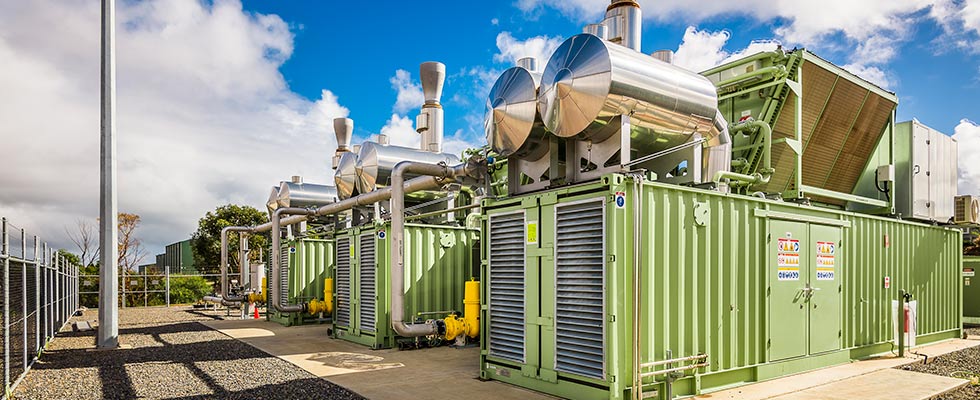
LMS Energy (LMS) is Australia’s largest landfill biogas company. In 2018, a change to the design of its generator sets required a new heat exchanger solution to dehumidify biogas.
LMS operates 60 biogas sites, generating more than 550,000 megawatts (MW) (1.87 billion British thermal units [BTU]) of baseload power each year and abating over 4.4 million tons of carbon dioxide (CO2), making the company one of Australia’s largest emissions reducers.
The company captures potentially harmful methane gas, which is generated in landfills as the contents decompose, and burns it in generators to produce electricity. To enable the gas to be burned, the water content has to be reduced from fully saturated 100% relative humidity to around 80%. In the past, LMS built its own generation modules which included on-board gas treatment, including dehumidification. Following a change of generator design, LMS approached a heat exchanger manufacturer to quote for the supply of biogas moisture removal (dehumidifier) units.
The engineering team realized that stainless-steel shell and tube heat exchangers were ideal for the purpose, and that corrugated tube technology would increase heat transfer and efficiency over standard smooth tube designs. During the design and approval process, there were design revisions to achieve an optimum bespoke design that met the strict dimension and footprint limitations, while maintaining velocities and heat transfer coefficients which were higher than those specified.
The first two units were installed and commissioned, and more heat exchangers were ordered. The most recent heat exchanger was incorporated into a gas delivery skid for on-site installation later in 2022.
The biogas comes out of the landfill somewhere between 86 F and 95 F, and after going through the heat exchanger, the temperature is between 48 F and 50 F. This condenses out the water, which is then removed by the condensate removal vessel. A positive displacement blower then raises the temperature and pressure of the gas and sends it to the generator set.
As well as making the biogas suitable for the generator set, it was noted that reducing humidity also helps prolong engine maintenance and component life, extends oil change schedules and generally helps with operations.
The heat exchanger design is based on a standard multi-tube type developed for steam-to-water applications and other similar processes. The use of a corrugated tube design improves heat transfer and energy efficiency compared to smooth tube designs, and expansion bellows are fitted to absorb the differential expansion between the shell and the inner tubes.
It was also noted that dehumidifying biogas not only increase the life expectancy of combined heat and power (CHP) engines and oil pumps, it also eliminates the formation of condensate in the gas pipeline, resulting in potential increase in the CHP production runtime by eliminating the possible obstructing and blockage in the gas flow.

